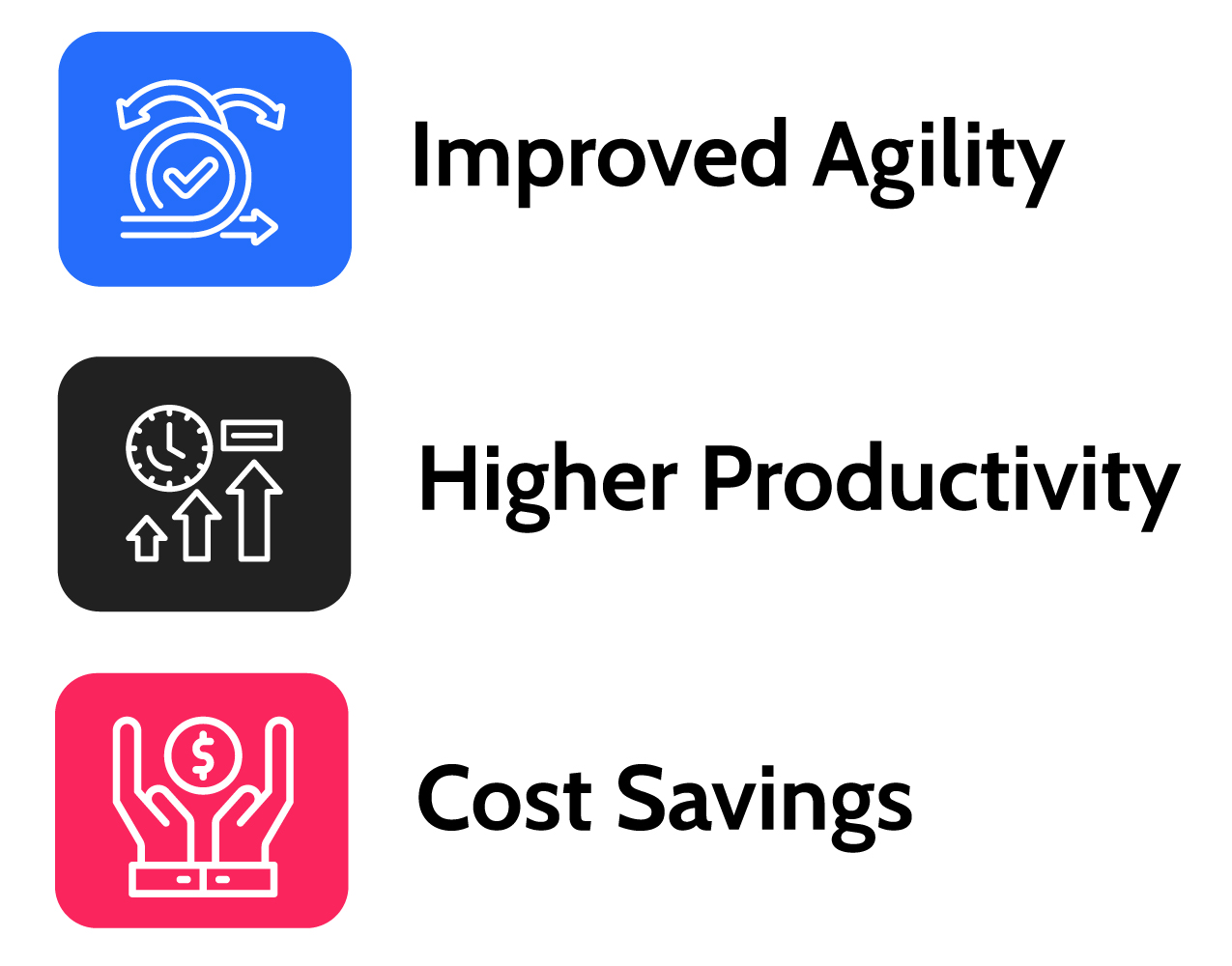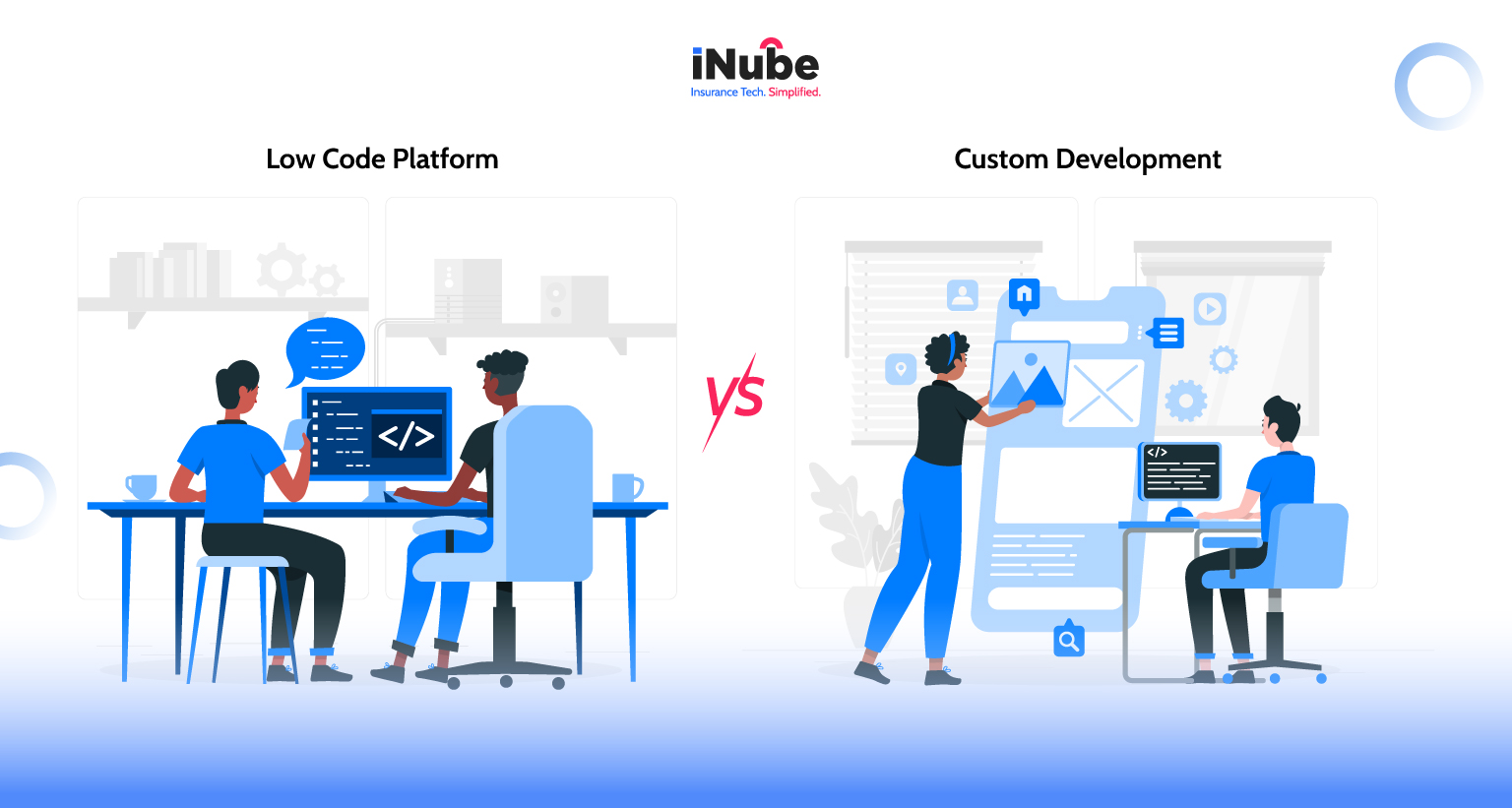Digital transformation is almost becoming like a TikTok trend in insurance. Every other business is adapting to Insurtech solutions without consciously understanding their necessity for technology adoption. While evaluating business applications, there are CIOs and CTOs who confront the question of- which is better low code platforms or custom development? If this strikes a chord with you, then this blog is just the one for you.
In this blog, we will be giving our perspective on this debate of low code platforms v/s custom development. Additionally, we will also try to give a balanced perspective on this ever evolving debate. Keep reading!
What to Consider- Low Code Platforms or Custom Development?
First things first! When a CIO or CTO confronts this question, they need to understand and weigh certain pivotal factors to zero in on the answer to this question. These factors include business needs, agility requirements, and scalability expectations. There are multiple organizations that prefer custom-built applications to avoid ongoing platform costs and more. In fact, 76% of insurance companies are now moving towards Low Code No Code platforms due to speed, flexibility, and built-in monitoring capabilities. It is pivotal to understand that this answer is not universal and the necessity to adopt low-code platforms or custom development will vary based on organizational requirements.
Additionally, you might be stuck with the question- Do Low Code No Code platforms always work? Not necessarily so!
Decoding some of the Advantages of Custom Development
While custom development might not be the universal solution for organizations, there are good set of advantages that insurers cannot choose to ignore. Here’s a closer look at these advantages:
Tailored as per Business Needs
One of the pivotal advantages of custom development is that these solutions can be easily tailored to individual business needs. These solutions easily adapt to specific insurance workflows that enable streamlining claims management and automated manual processes. The custom solutions are made for unique business logic. Doesn’t matter whether you are in Policy Administration, Risk management or Claims processing.
Seamless Integration
These custom developed solutions can smoothly integrate with Legacy insurance systems while also incorporating advanced technologies. This also ensures effective collaboration between the existing document management software and new systems such as insurance mobile app development tools
Enhanced Scalability and Flexibility
Custom-developed insurance software solutions offer the scalability and flexibility required for business growth. This allows in adding new features such as claims management systems and innovative solutions without the constraints of pre-packaged solutions
But when will Custom development actually be working for organizations?
Hop on to the next section to decode.
When will Custom Development Work for an Organization?
Custom development offers two of the clearest advantages- complete authority over the solution and no monthly platform fee that you need to worry about. However, there is a good chunk of the budget upfront, and it significantly requires the IT infrastructure’s dedicated amount of time and energy.
However, here are some of the key scenarios where custom development is worth the investment:
![]()
Minimal change requests
If businesses don’t evolve frequently, there is no real need for Low code No code platform capabilities
Single-use applications
If your organization is only in need of a static, low-maintenance system, then in those times a Low code No code platform works well
Industry-specific requirements
If your business operates primarily in a highly specialized domain where off-the-shelf Low code No code solutions might not be a good fit, a custom developed solution will ensure the right fit.
Advantages of Low Code No Code Platforms
If you are wondering whether resorting to low code no code platforms will be working for your organization or not, then here are some of the advantages that you need to keep an eye out for, to understand low code no code platforms better:

Improved Agility
This is a key benefit of low code no code platforms, it offers enhanced agility. These platforms empower insurance companies to achieve reusable components which eliminate the need for coding from scratch. The customized low code no code platforms enable IT teams to innovate quickly and offer them the space to accomplish more in less time.
Higher Productivity
With low code no code platforms, time is not a barrier to productivity. Increased productivity will enable businesses to innovate faster and get a better return on investment in every project. These Low code no code platforms primarily democratize access to AI technology for unlocking productivity for developers.
Cost Savings
With Low Code No Code platforms, there are a lot of cost savings. When insurance companies take a low code no code platform approach, it reduces the need for hiring more developers, additionally, reducing hiring costs. It helps businesses to reduce low code supplements or replace the existing applications by reducing the cost of legacy license fees and maintenance.
When will the Low Code No Code Platform Work for an Organization?
After looking at the scalable advantages of Low code no-code platforms, here are some of the scenarios as to when you can consider opting for low code no code platforms:
Fast Time-to Market
Organizations that are looking to launch products quickly can leverage Low code No code platforms and seamlessly launch newer products into the market.
Scalability
If you are looking to scale across, use cases, then you can seamlessly do it with low no-code platforms. If your organization consists of multiple business units and requires different applications, then Low code no-code platforms can be a good option for seamlessly scaling and integrating across varied use cases,
Working with Multiple Technologies
If you are working with multiple tech stacks, then low code no code platforms offer powerful consolidation such as unified language development, centralized management console, and streamlined team expertise.
The Truth-Leveraging the Right Technology Strategy
It is important to understand that there is no one fit for all, and the strategy will vary across organizations. It is also equally important that the low code no-code platforms are not here to replace traditional development; however, they are increasingly reshaping how enterprises are building and deploying applications.
Conclusion
While both the strategies work perfectly for organisations, the CIOs and CTOs need to weigh multiple factors before finalizing a strategy and keeping in mind their business needs. In the debate for low code no platforms, businesses need to have a comprehensive understanding of the pros and cons of each of these strategies.

Archismita Mukherjee
Content Writer




